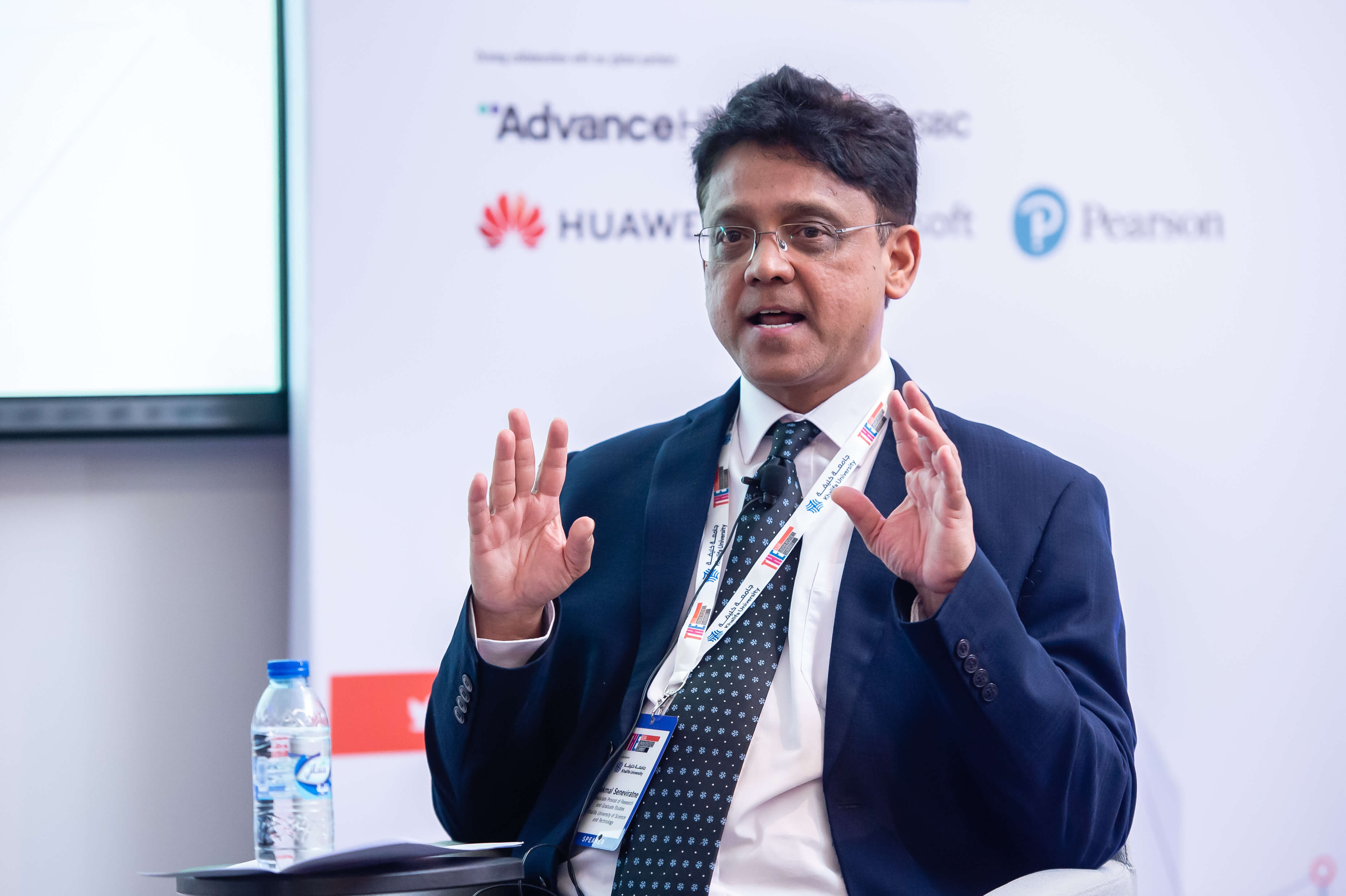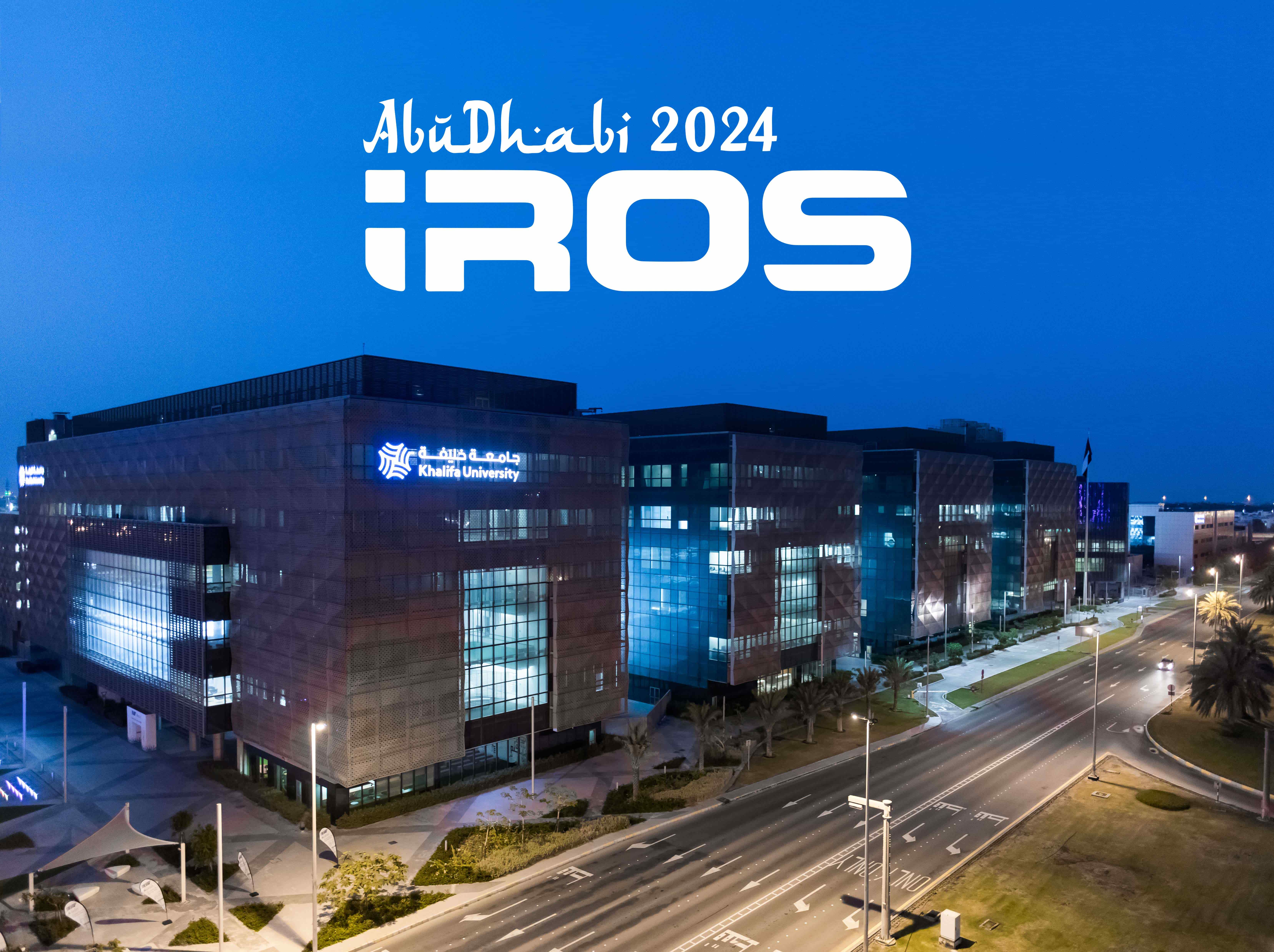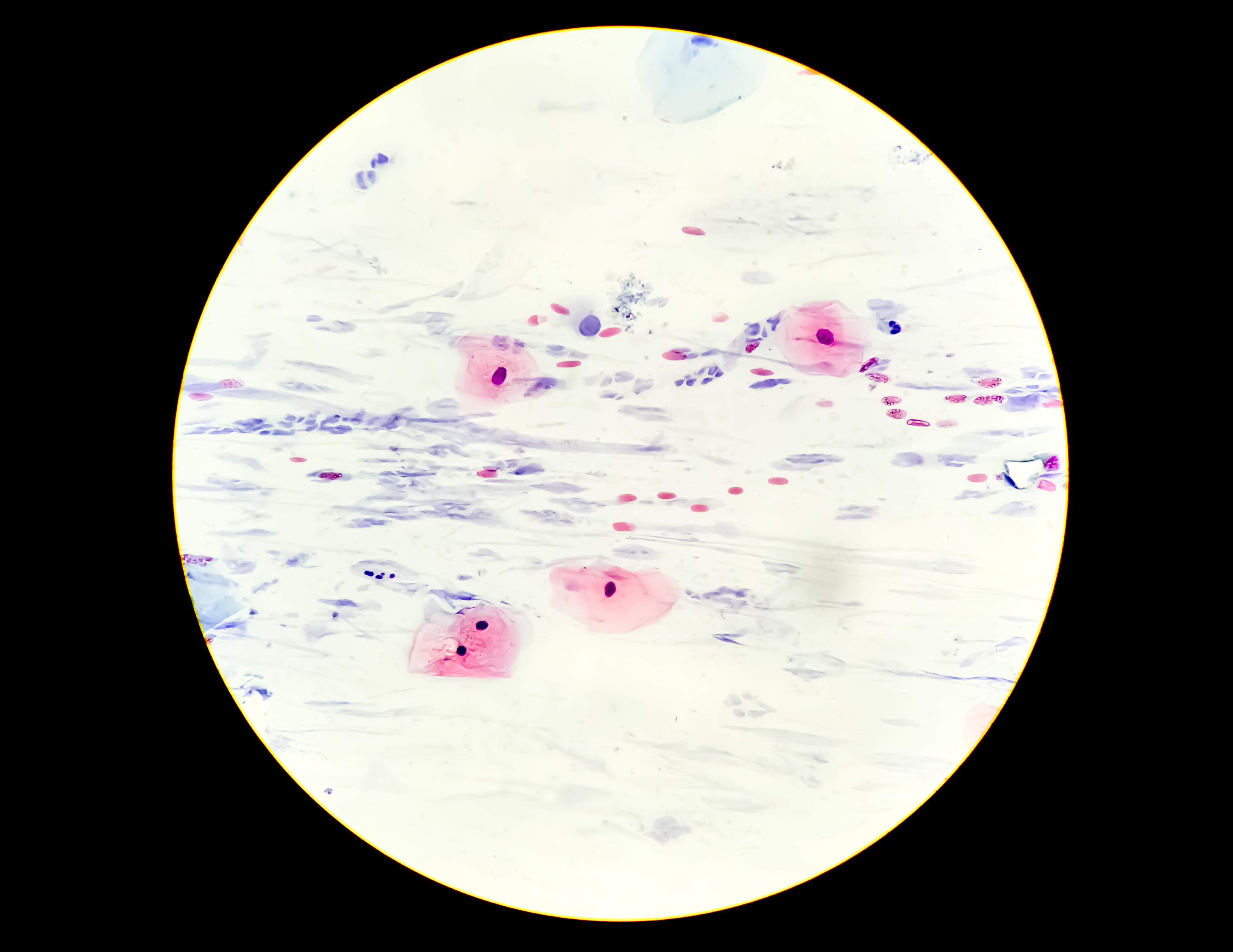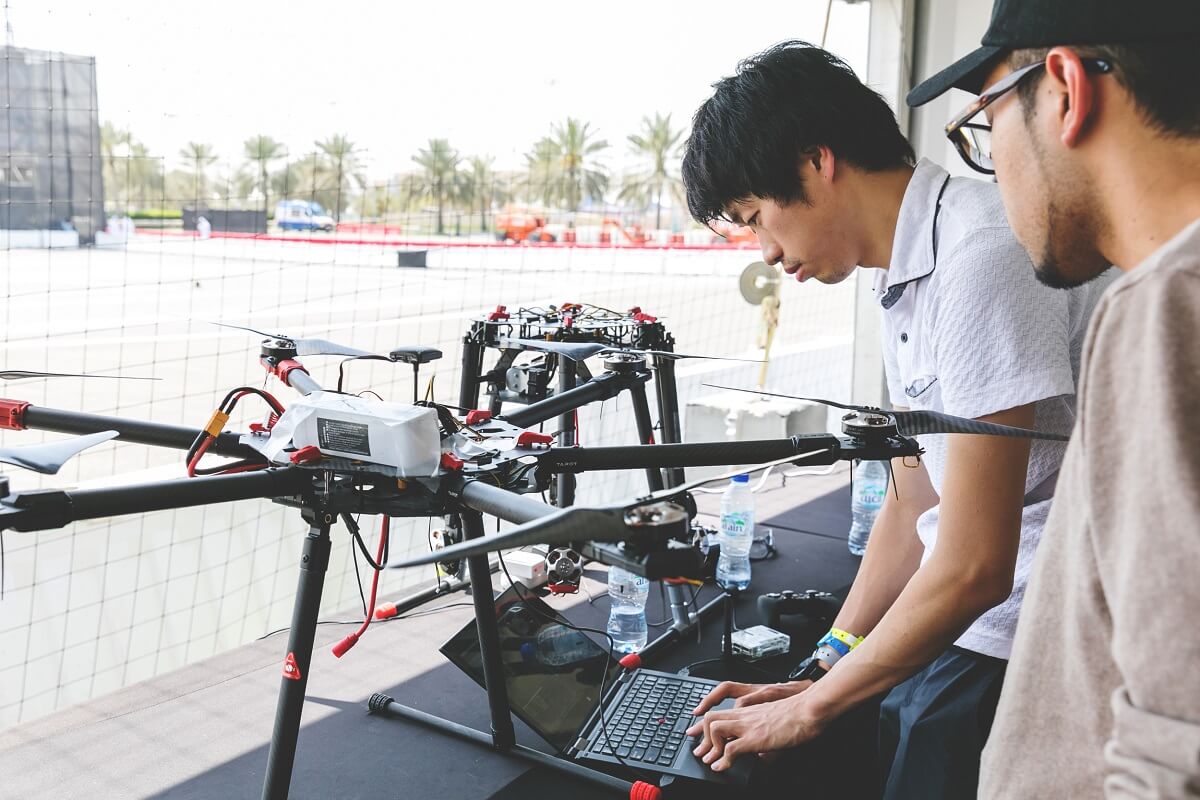
Khalifa University’s Dr. Lakmal Seneviratne leads panel on Real World Robotics to discuss current challenges to the mass deployment of robots across industries
The global economy is entering the Fourth Industrial Revolution. The physical and information worlds are converging, leading to rapid advancements in digitalization, automation, artificial intelligence (AI), and crucially, robotics. The robotic transformation now underway is unlocking substantial new economic growth opportunities, but the mass deployment of robots is still concentrated in niche areas, like the automotive industry, electronics, and machinery production.
“There are major technological and societal challenges that need to be addressed in order to unleash the full potential and immense benefits of robotics across organizations, industries and society as a whole,” said Khalifa University’s Dr. Lakmal Seneviratne, Associate VP for Research and Director of the Khalifa University Center for Autonomous Robotic Systems (KUCARS).
Dr. Seneviratne led a panel discussion on real world robotics during the Times Higher Education Asia Summit at Khalifa University on Monday, 1 April, 2019. Panelists included robotic experts Dr. Peter Corke, Professor of Robotic Vision from Queensland University of Technology; Dr. Paolo Dario, Professor of Biomedical Robotics, The BioRobotics Institute at Sant’Anna School of Advanced Studies; and Dr. Dinesh Manocha, Professor of Computer Science at the University of Maryland at College Park.
Khalifa University is addressing some of the critical R&D challenges in robotics through KUCARS and other research centers, which include research that focuses on advancing the state-of-the-art in unmanned aerial, ground and underwater systems, autonomous manipulation and computer vision. Such capabilities will accelerate development of key sectors during the Fourth Industrial Revolution in the years ahead.
“Robotics is a huge market worth billions of dollars and is arguably the most consequential area of Fourth Industrial Revolution-related technology in terms of its impact on the world,” shared Dr. Corke during the panel. “We’ve got robots in the home, in hospitals, and on the roads. We’ve got robots in food production and civil infrastructure inspection.”
Dr. Manocha agreed: “The market research company Frost & Sullivan think that by 2020 there will be at least one robot per house. This could range from a mobile robot cleaning your floors to a household butler managing all level of tasks.”
While the panelists agreed that the use of robots will continue to expand rapidly in areas like industrial manufacturing, they also noted that as robots are applied to more sophisticated tasks, the range of industries they operate in is likely to grow exponentially.
“Artificial intelligence, for example, is not as widely deployed in industry as we would expect, but it has all sorts of applications in transforming manufacturing,” said Dr. Corke. “We take AI for granted. Look at Siri: one narrow application of artificial intelligence, but well executed.”
Dr. Manocha added: “Now, we want to design common sense. We’re a long way from full autonomy, as it has a lot of promise but it’s very difficult to achieve. Autonomous vehicles have enormous potential, but we’re still a long way off. The success of AI is proportionate to the success of robotics.”
When asked which area would see the most impact from robotics in the future, all panelists agreed: healthcare is the next big thing.
“Before, patients wouldn’t dream of not being operated on by humans, but now?” said Dr. Dario. “Robotic medical assistants monitor patient vital statistics, automatically enter information into the electronic health record, carry supplies throughout the hospital, and now are even assisting in surgery.”
“It’s not just surgical,” added Dr. Corke. “Robotics is emerging in areas like physiotherapy and even counselling. Technology in healthcare is strongest where we don’t have the manpower to support the patients.”
AI is already being used to detect diseases more accurately and in their early stages, and one of its biggest benefits is helping people stay healthy to prevent these diseases in the first place. “Technology can encourage people to practice healthier behaviors and help manage a healthy and active lifestyle,” said Dr. Manocha. “The proliferation of consumer wearables combined with AI is helping patients understand what they need to do to prevent developing lifestyle diseases like diabetes.”
AI and robotic technologies are promising areas of healthcare as the explosion of data combined with the rise in demand from ageing populations around the world, rising costs, and shortage of supply have left a huge gap ready to be filled by technology.
The rapid progress seen over the past few years is just the beginning: research centers like Khalifa University’s Healthcare Engineering Innovation Center, the Center for Biotechnology, and the KUCARS are leading the way in developing the technologies that will save more lives, cure more diseases, and help us all live healthier.
Jade Sterling
News and Features Writer
9 June 2019





